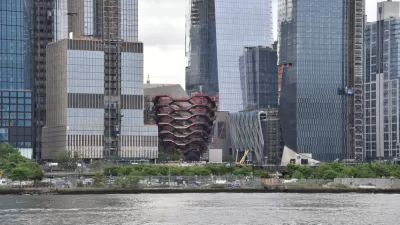Most policies regarding poverty are driven by obsolete metrics. Another model, which measures the very basic needs for survival, reveals deep poverty in New York City.
Jilly Stephens explains the difficulty in quantifying poverty in the United States, which makes it difficult to create policies and programs to combat the causes and effects of poverty.
For instance:
The federal poverty threshold, which was developed over five decades ago and is based on what the estimated food costs were for a family at that time, has been widely criticized as being outdated and flawed. Meanwhile, the New York City poverty number, which is calculated by the City’s Center for Economic Opportunity, takes into account all of a family’s expenses, including housing and resources such as government benefits. While the New York poverty number is a closer reflection of how people live, it’s still not the most accurate measurement.
As an antidote to "cookie-cutter standards, Stewart introduces the Self-Sufficiency Standard, as developed by the Center for Women’s Welfare. According to Stewart's explanation, "[developed] by the Center for Women’s Welfare, the standard examines the income necessary for families to afford basic needs—such as food, shelter, clothing and transportation—in various cities and states without public assistance. It identifies what it takes for a family to simply survive, not thrive."
Stewart goes on to provide insight into the 2014 Self-Sufficiency Standard for New York—a shocking 42 percent of households do not meet the standard.
FULL STORY: The US doesn’t have a good way of determining who’s poor

Planetizen Federal Action Tracker
A weekly monitor of how Trump’s orders and actions are impacting planners and planning in America.

Maui's Vacation Rental Debate Turns Ugly
Verbal attacks, misinformation campaigns and fistfights plague a high-stakes debate to convert thousands of vacation rentals into long-term housing.

Restaurant Patios Were a Pandemic Win — Why Were They so Hard to Keep?
Social distancing requirements and changes in travel patterns prompted cities to pilot new uses for street and sidewalk space. Then it got complicated.

In California Battle of Housing vs. Environment, Housing Just Won
A new state law significantly limits the power of CEQA, an environmental review law that served as a powerful tool for blocking new development.

Boulder Eliminates Parking Minimums Citywide
Officials estimate the cost of building a single underground parking space at up to $100,000.

Orange County, Florida Adopts Largest US “Sprawl Repair” Code
The ‘Orange Code’ seeks to rectify decades of sprawl-inducing, car-oriented development.
Urban Design for Planners 1: Software Tools
This six-course series explores essential urban design concepts using open source software and equips planners with the tools they need to participate fully in the urban design process.
Planning for Universal Design
Learn the tools for implementing Universal Design in planning regulations.
Heyer Gruel & Associates PA
JM Goldson LLC
Custer County Colorado
City of Camden Redevelopment Agency
City of Astoria
Transportation Research & Education Center (TREC) at Portland State University
Jefferson Parish Government
Camden Redevelopment Agency
City of Claremont




























